A New Study on Self-cleaning Surfaces Solves the Problem of Dust Accumulation on Photovoltaic Panels and Glass Curtain Walls
Transparent and bright photovoltaic panels and glass curtain walls of buildings can ameliorate the efficiency of solar energy conversion and the appearance of buildings, while also increasing energy efficiency.
Certain functional facilities or curtain walls, such as photovoltaic panels, are highly dependent on the cleanliness of surface coatings, since light transmission can affect the absorption of solar energy, which in turn affects the generation of power.
However, photovoltaic panels installed in open environments and exposed to sand and dust are tasked with absorbing a high amount of sunlight, while also being required to withstand sandstorms and acid rain which can cause corrosion of glass. Therefore, keeping the surfaces of such facilities "spotless" has always been a major challenge in the industry.
To this end, a research and development team led by Professor Yang Hongxing from the Department of Building Environment and Energy Engineering at The Hong Kong Polytechnic University (PolyU) has developed a new type of self-cleaning coating, which automatically removes dust particles from the surface when applied as a nano-coating, ensuring that the photovoltaic panels remain clean and bright.
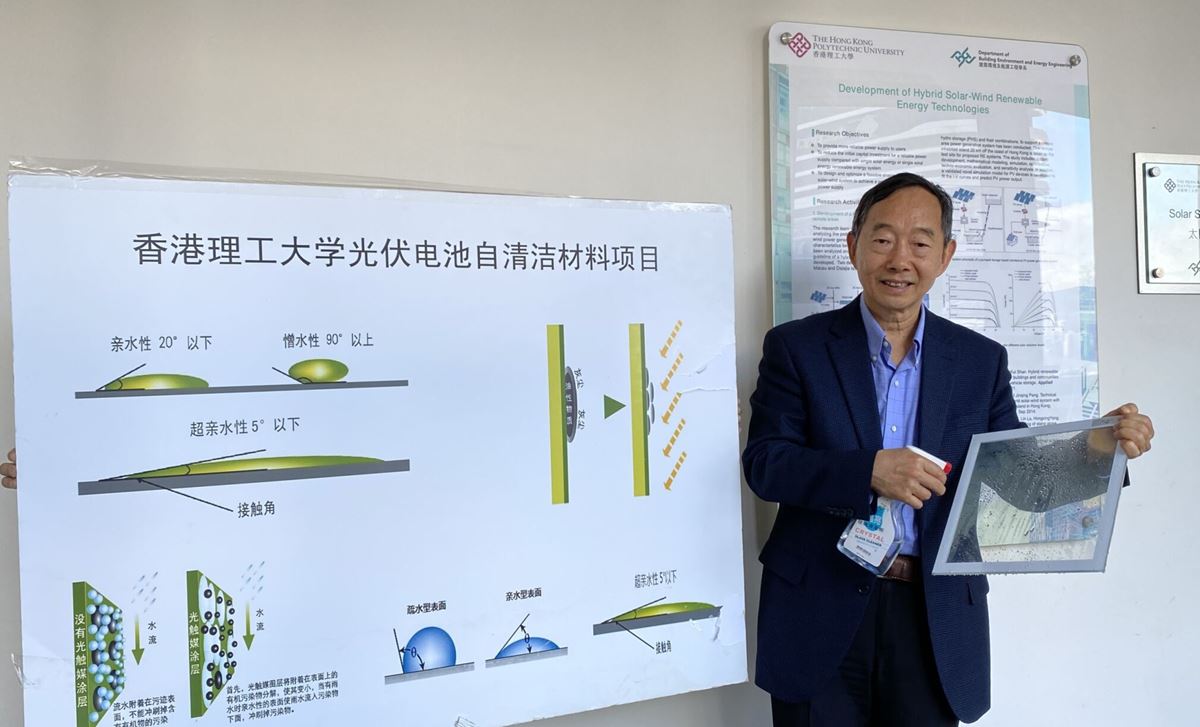
Professor Yang demonstrates the result of the self-cleaning nano-coating beside a promotional poster in the laboratory.
Protection Against Dust and Acid Rain with Hydrophilic Self-cleaning Coating
For the past few decades, self-cleaning glass coating has sparked interest in both academia and industrial sectors, thanks to its characteristics of staying clean and bright for extended periods without the need for external cleaning and maintenance.
The "self-cleaning" characteristics of coatings come from a thin layer of TiO2 applied to glass surfaces. "Thanks to the photocatalytic and photo-induced hydrophilic properties of the TiO2 coating, when exposed to sunlight, it not only decomposes organic dirt into carbon dioxide and water, but also evenly disperses rainwater on the glass surface in a sheet-like manner, effectively rinsing away loose dirt and allowing for rapid evaporation," explained Professor Yang.
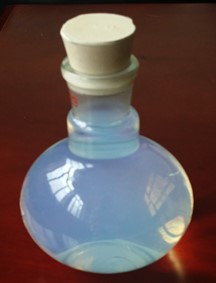
The newly developed self-cleaning coating by Professor Yang has high transparency and is a multifunctional, highly dispersed nano-composite coating. This water-based coating is composed of 99% water and does not contain any harmful ingredients.
Traditionally, self-cleaning TiO2 coatings have been applied to glass surfaces using four major methods: chemical vapor deposition (CVD), magnetron sputtering, spray pyrolysis, and Sol-Gel. Among these, CVD and magnetron sputtering techniques can produce highly durable transparent TiO2 films; however, due to the requirement of complex equipment and manufacturing techniques, high investment and maintenance costs were incurred at early stages. The manufacturing cost of the coating alone is around US$10-20 per square meter. While Sol-Gel is cost-effective and less technically demanding, its adhesion capabilities are poorer. Spray pyrolysis requires a lower level of equipment and technical requirements, as well as more modest costs, making it suitable for large-scale production. However, due to limitations of spraying techniques, the material loss rate can reach 98%.
The new self-cleaning coating, developed by Professor Yang, is a highly transparent, multifunctional, highly dispersed nano-composite coating. "The coating is made with a ball milling method, which grinds the nanoparticles to 5nm, minimizing effects of the Rayleigh scattering, thereby providing excellent dispersion properties and excellent visible light transmittance of over 98%," said Professor Yang.
Furthermore, after being organically activated by sunlight, the coating exhibits photocatalytic activity and superhydrophilicity (water droplet contact angle less than 1 degree), allowing water droplets to form a film that decomposes and adsorbs organic substances on the glass surface. These substances are easily rinsed away by rainwater. If the coating undergoes tempering after being processed in the factory, it becomes more durable, with a hardness of up to 8H, resulting in a lifespan of up to 20 years and protection against sandstorms and the corrosion of glass caused by acid rain.
Practicality coupled with Excellent Results
This new self-cleaning coating has been used in various engineering projects, including the photovoltaic parts project in Wuyi, Zhejiang, since the end of 2016.
To test whether the coating can improve the power output of photovoltaic panels, Professor Yang and his research team members divided the panels into two groups for data comparison.
The first group consisted of photovoltaic panels that were cleaned and coated with the self-cleaning coating.
The second group of panels was only cleaned and self-cleaning coatings were not applied.
After comparing the data from both groups of panels for the same months in two years, Professor Yang discovered that after cleaning, the power output of both groups of panels increased by 6.0% to 8.4%, which indicates that a clear glass surface can indeed enhance power output. Furthermore, when excluding factors in relation to weather, the first group showed a 2.2% higher proportion in total power generation compared to the second group, demonstrating the significant increase in the effectiveness of the self-cleaning coating.
Additionally, the photovoltaic power stations, Han's Laser Co. Ltd in Shenzhen also saw a 5% increase in total power generation with application of the self-cleaning coatings.
"We believe that with continuous development, the advantages of the self-cleaning coatings will be increasingly evident," Professor Yang said.
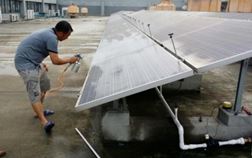
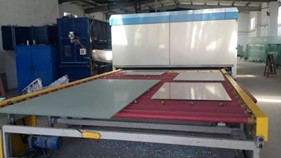
The left image shows one of Professor Yang's doctoral students applying the self-cleaning coating during a photovoltaic project in Shenzhen. The coated photovoltaic components have excellent hydrophilic properties, making it difficult for dust to accumulate and achieving a spotless surface. The right image illustrates the application of the nano-coating on glass panels using screen printing in a factory, followed by strengthening processes.
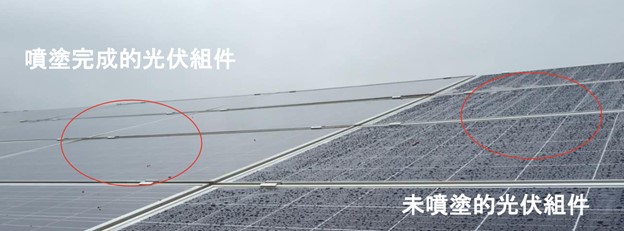
Comparison between photovoltaic panels with and without coatings.
Simple Application with Cost-effectiveness
As a major benefit of Professor Yang's self-cleaning coating, it can be applied to glass surfaces through inexpensive and convenient screen printing technology, rendering the coating process relatively simple. As a result, it has gained popularity in the photovoltaic and construction industries. The self-cleaning coating can also be applied to architectural glass surfaces, and has been applied to the skylight and glass canopy of Block X on PolyU campus.
The process is as follows:
1) Clean the surface of the photovoltaic panel with a neutral cleaner and rinse off any residual cleaner with water, allowing the panel to air dry naturally.
2) Apply the coating to the photovoltaic panel using a spraying machine, adjusting the speed and spraying volume as necessary.
3) Allow the glass surface to air dry naturally, which typically takes only 3 minutes.
4) Conduct sample testing to ensure that no damage has been done to the photovoltaic panel during the coating process.
Screen printing technology not only significantly reduces the production cost of the self-cleaning coating to less than US$1 per square meter, it also facilitates transportation and storage, saving additional technical investment costs.
Furthermore, Professor Yang's self-cleaning coating is water-based, with a volatile organic compound content of only 3g/L and no heavy metals, making it suitable for application in green buildings. This research has been awarded the Gold Medal at the 44th International Exhibition of Inventions of Geneva held in Switzerland, the Special Merit Award from Technical University Cluj–Napoca, Romania, and the Merit Award of the Green Building Award.
Currently, the self-cleaning coating has entered into the stage of mass production by a local company in Hong Kong.
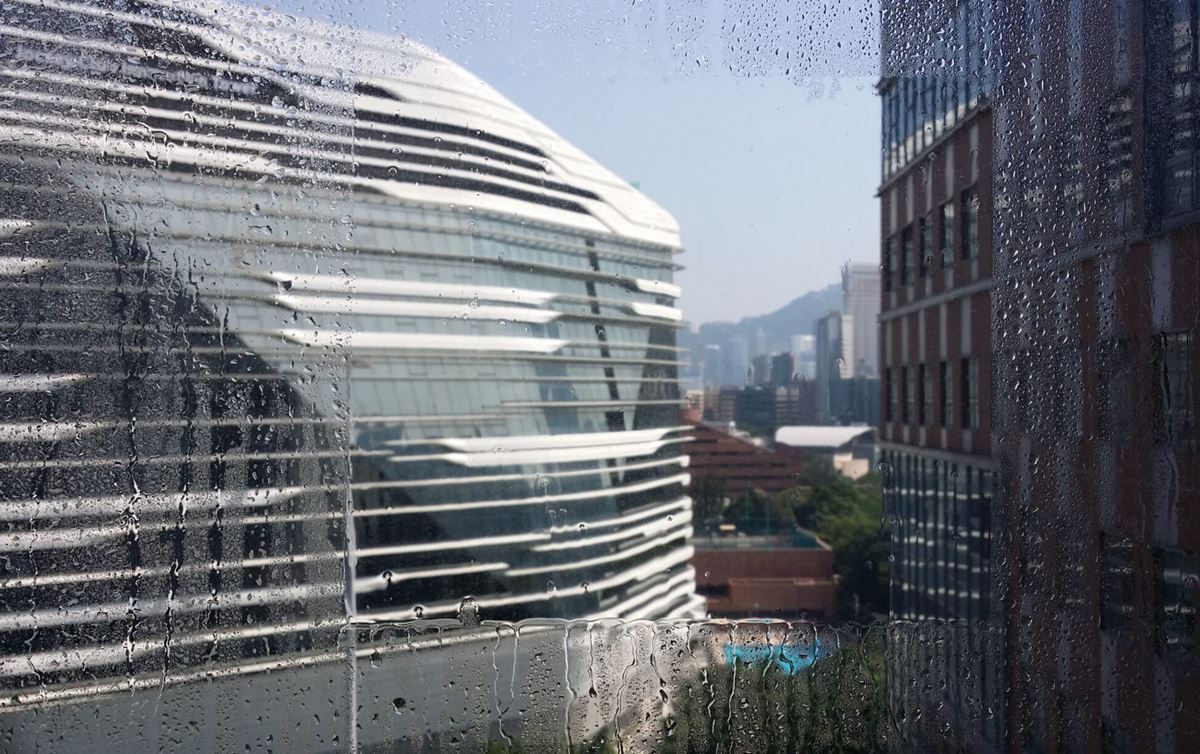
Demonstration of the self-cleaning coating on the windows of Block Z on PolyU campus. From the photo, it can be seen that the glass is clear and bright, as both rainwater and dust are less likely to accumulate. This significantly reduces costs of cleaning and maintenance while enhancing the overall appearance of the campus.
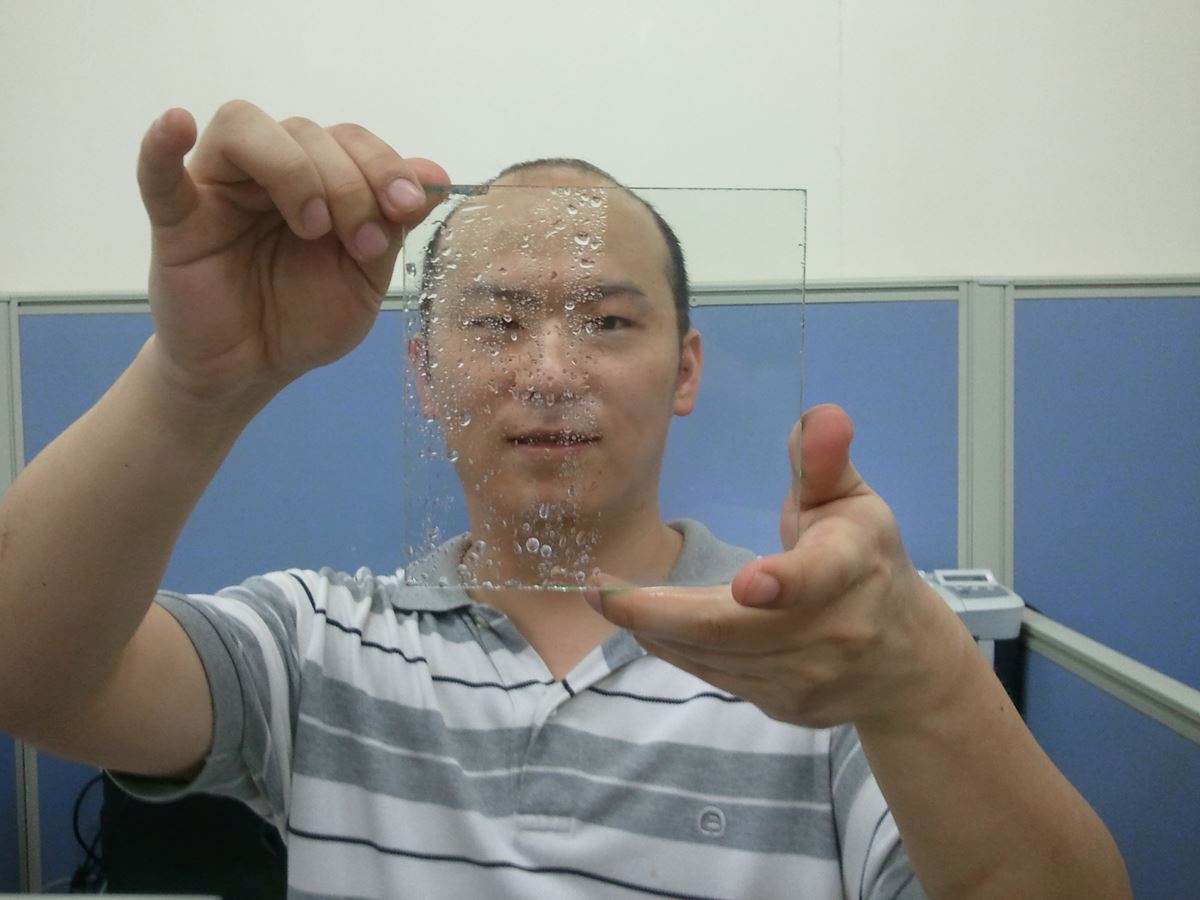
Dr. Wang Yuanhao from Professor Yang's research group is demonstrating the effect of the superhydrophilic coating.
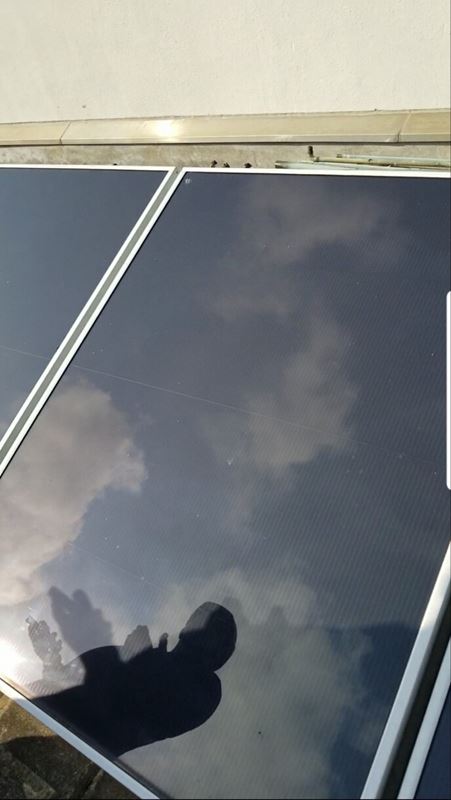
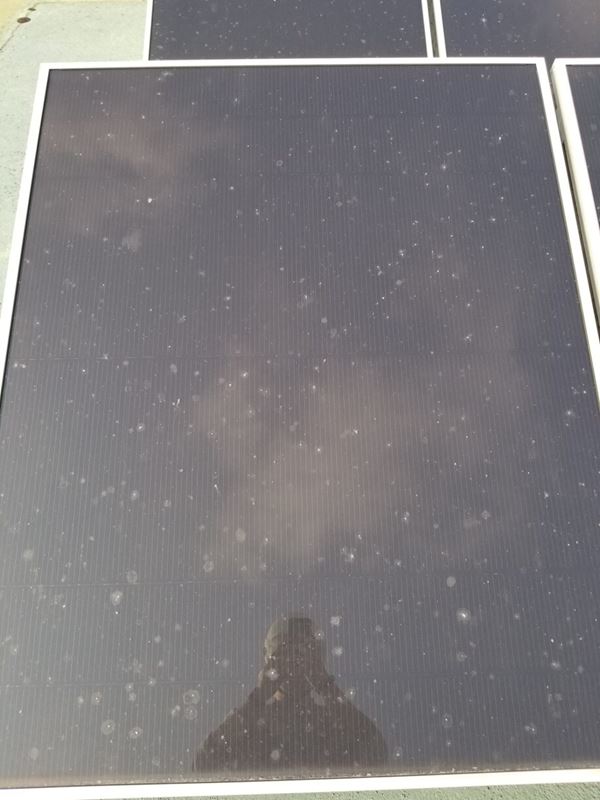
From a solar photovoltaic project in Hong Kong: Contrast of panels one year into application of the self-cleaning coating.
